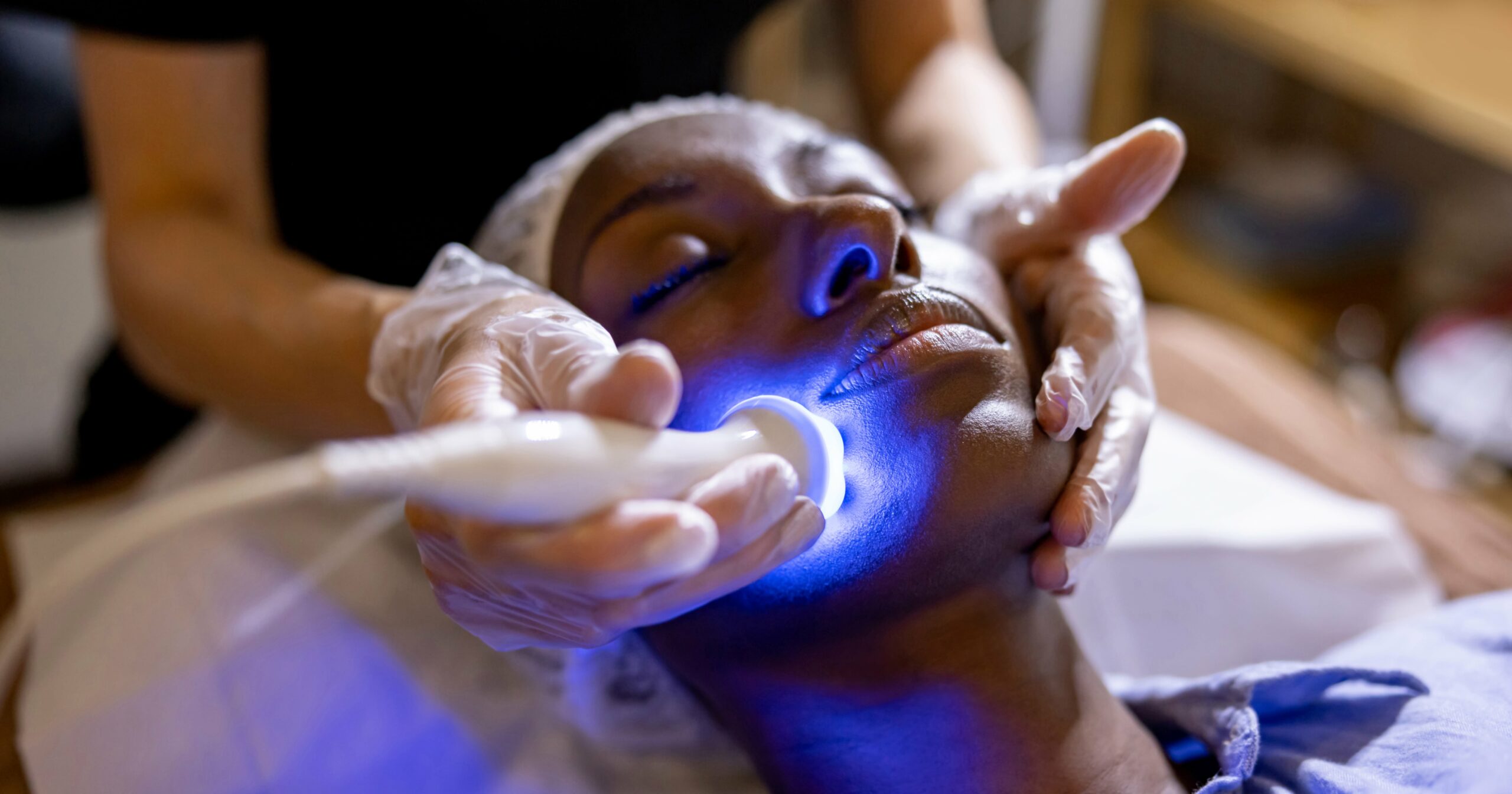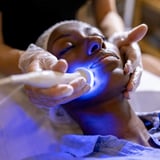Image Source: Getty/andresr
With what feels like an endless loop of information coming from all angles at all times, it can be hard to discern what beauty advice you should actually take seriously. One of the industries most affected by this is skin care. At any given moment you can find someone spewing misinformation about sunscreens, an aesthetician revealing a new treatment that you have to try, and a board-certified dermatologist explaining why you shouldn’t be using a product that one second ago you swore by.
All this is to say: it can be confusing to know who to go to for what when it comes to preserving your skin health – especially in the era of TikTok fame and social media virality. So if you too have often wondered what the difference is between skin-care professionals (especially as it pertains to dermatologists and aestheticians), we asked them for you. As it turns out, the main difference is that dermatologists can perform a host of invasive to non-invasive procedures, while aestheticians are more limited to surface-level enhancements.
“Aestheticians can cosmetically enhance the appearance of the epidermis, or outermost layer of the skin, within the scope of practice outlined by their state,” aesthetician Ashley White says. “Dermatologists are medical professionals that can legally diagnose abnormalities and prescribe medication to treat specific conditions.”
To better understand the difference between a dermatologist versus an aesthetician, including which instances you should see one over the other, keep reading.
Experts Featured in This Article
Ashley White is an aesthetician based in Chicago.
Tracy Evans MD, MPH, is a board-certified dermatologist, skin cancer specialist, fellowship-trained Mohs surgeon, and the founder of Pacific Skin in San Francisco.
Dermatologists vs. Aestheticians
The main difference between dermatologists vs. aestheticians is the amount of training required for each field. Allow us to explain more:
What Is a Dermatologist?
“A dermatologist is a medical doctor who has completed four years of undergraduate school at university or college, four years of medical school, a medical internship, and three years of dermatology residency,” dermatologist Tracy Evans MD, MPH, says. “They also take a national board-certified exam.”
What Is an Aesthetician?
Aestheticians on the other hand fall under the umbrella of cosmetology. “Aestheticians complete a cosmetology degree, which is usually one year following high school or college,” Dr. Evans says. “They are regulated by the states that they practice in. Some aestheticians can do procedures, such as facials, microblading, microplaning, eyelash extensions, and hair. Some states allow them to do lasers and even injectables, but most do not.”
When to See a Dermatologist vs. an Aesthetician
Though some of the procedures that both specialties have some overlap, there are instances where you should see a dermatologist as opposed to an aesthetician. “For all true skin conditions, you need to be seeing a dermatologist,” Dr. Evans says. “This includes everything from eczema, acne, rosacea, psoriasis, skin cancers, mole checks.” Additionally, any cosmetic procedures that involve cutting or injecting the skin such as fillers, Botox injections, and lasers should be done by a dermatologist.
White agrees, adding: “You should be seeing a dermatologist one to two times a year for skin checks, rashes, nodules, and screenings for early signs of skin cancer.” She recommends seeing aestheticians for general topical maintenance, like regular facials, LED or chemical treatments, and extractions. This means you’ll likely see an esthetician more often than you do a dermatologist. “Aestheticians can provide certain treatments in-clinic to enhance and/or accelerate results like a more even skin tone and little to no breakouts,” White says. “Aestheticians typically provide longer time blocks with their clients so they receive extra attention and support during their skin optimization process.”
Which Is Better: Dermatologist vs. Aesthetician?
While it may seem like you have to choose between the two, you don’t. “It’s actually beneficial to combine skin care and medicine,” White says. “Having multiple providers allows you to maintain healthy skin instead of simply just fixing skin that has already been damaged.”
Simply put, aestheticians provide services that address the appearance of your skin, while a dermatologist help to address its fitness, a process that may require a bit more of an in-depth dive into your medical history, as well as those more cosmetic treatments like filler or lasers. No social media algorithm or product recommendation will ever accurately address the full picture when it comes to your specific concerns, so whether you can only choose one or are creating team of experts, do always make sure to go to a professional when trying to achieve the skin of your dreams.
Ariel Baker is a former assistant editor for PS Beauty. Her areas of expertise include celebrity news, beauty trends, and product reviews. She has additional bylines with Essence and Forbes Vetted.




